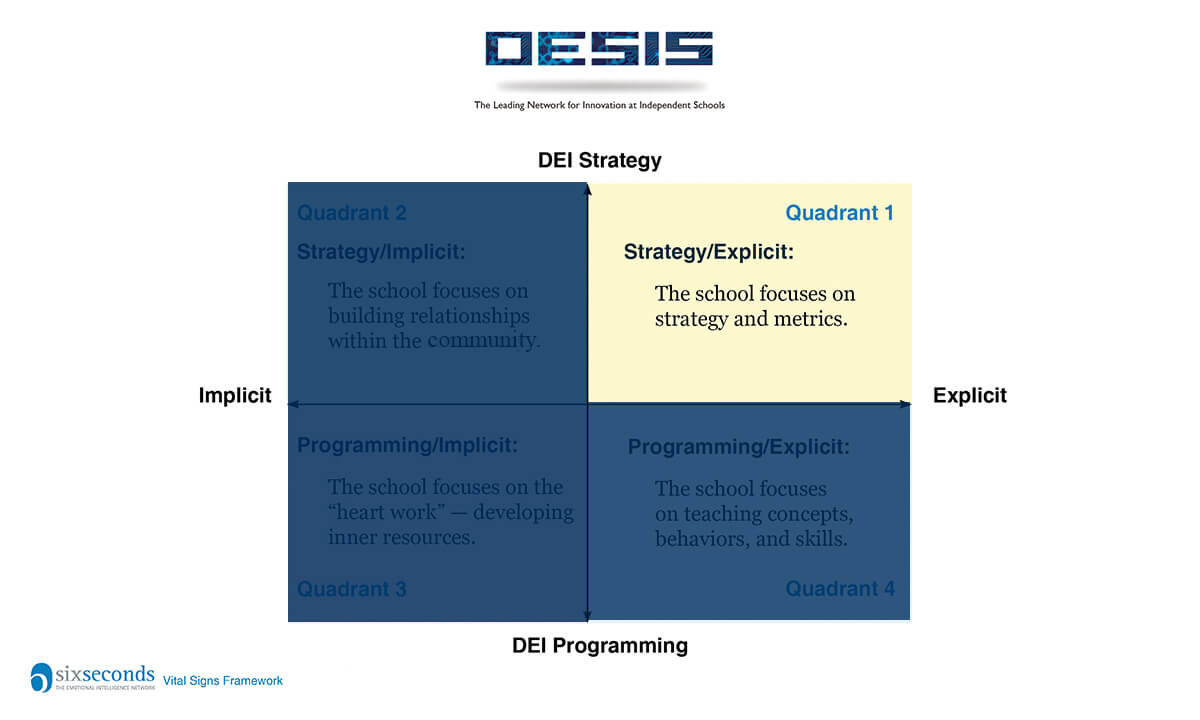By Joshua Freedman CEO, Six Seconds and Michael Eatman PCC, Founder, Culture7 Coaching
Part I of What’s The Real Plan for DEI was an overview of the key issues associated with building a comprehensive DEI program at your school. We identified four quadrants that illustrate both the strategic and programming steps, those explicit to your constituents and implicit to your community (where the rubber meets the road). In this segment, we’ll focus on the first quadrant where the school focuses on strategy and metrics. A key point from the first article: We need all four quadrants!
Quadrant 1 is all about the longer-term implications of your DEI initiative. How will you build the institutional foundation that supports the programmatic initiatives you introduce to increase your school’s emotional intelligence quotient (EQ) for diversity, equity, and inclusion? You’ll be thinking about the potential obstacles you might encounter, and the impact of your new vision on long-standing traditions at the school (such as admissions policies, budget constraints, programmatic assumptions, and fund-raising priorities).
Once you develop a strategy that links your DEI program to the school mission, you’ll want to develop the metrics that tell you whether your program is meeting the…


